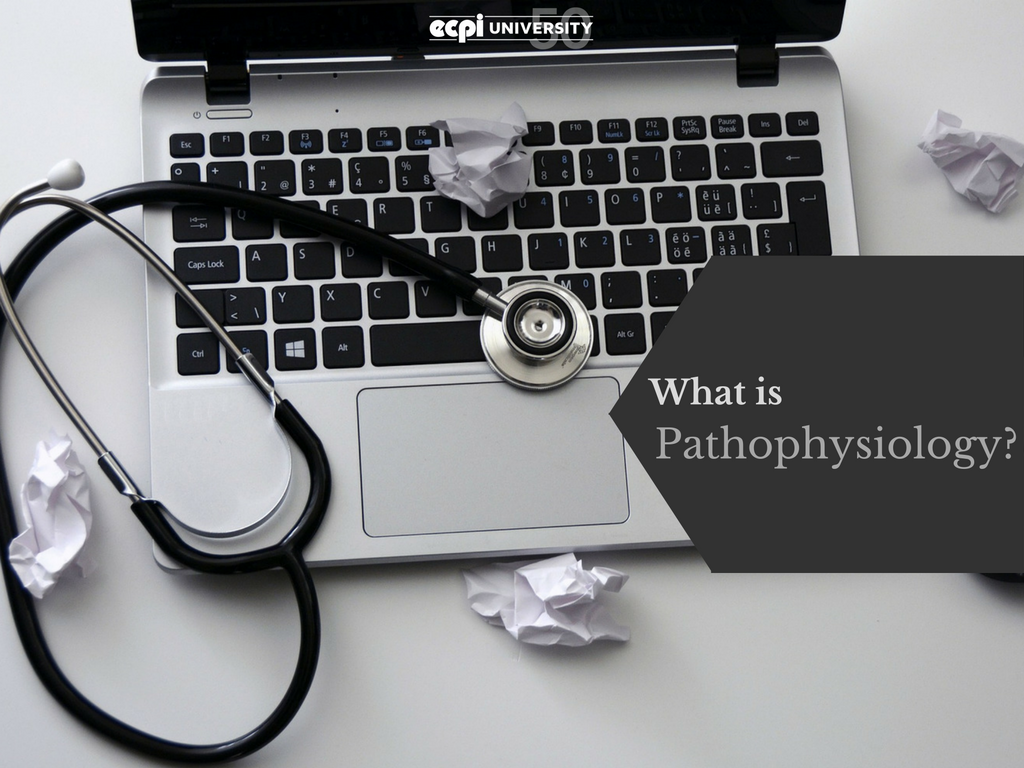Why does a Health Information Management Student Need to take Pathophysiology?
How many times during high school did you ask the teacher, “When are we ever going to have to use this?” Done with secondary school, you think you will get to select all your classes in college for your Associate degree. You take up health information management and see completely reasonable classes, like Electronic Health Records, or Reimbursement Methodologies. You also have to take some rather unexpected classes, like anatomy and pathophysiology. Wait, what?
What is Health Information Management?
Health information management (HIM) combines finance, information technology, law, management, and, yes, medicine. A hard-working student working toward an Associate of Applied Science Degree in Health Science will learn the latest information management technology applications and understand the workflow process, which does include medicine.
Think of the profession as a bridge between the medical professionals—like nurses, doctors, diagnosticians and technologists—and the patients. Storing medical records of all kinds is only part of the job.
All those records, whether on film, computer files, or paper, must be accessible to doctors striving to help patients get better. Health information must be stored but also be easily retrievable. This information can include financial and personal information, so state and federal laws come into play. Health information often means medical records full of complex medical terminology.
A health information manager has to be familiar with some basic medical concepts, including anatomy, and (yes) pathophysiology. If you are the kind of person who likes detail and hopes to help others, health information management could be a great fit for you.
Anatomy and Physiology
You probably realize humans are somewhat different from, say, a 1964 Aston Martin DB5 sports car. To efficiently work with health records, you need to know a knee from an elbow. That sort of overall knowledge is anatomy: where the parts are, and what they are called.
Physiology is how those parts work, alone and in groups, to allow humans to be, well, human. Physiology deals with normal, healthy functions:
The knee is the largest joint in the body, and joins the femur (thigh bone) to the fibula (outside shin bone) and tibia (larger, inside shin bone), the joint being covered by the patella (kneecap). All this scaffolding is lashed together with articulating (bending) ligaments, some cartilage, and tendons. This allows uniaxial (single direction) hinging in a normal, healthy, perfect knee.
That little dose of anatomy and physiology tells you a lot about only one joint. When you take two classes in the two topics, you learn a lot more. As a health information manager, you will recognize the names of bones, muscles, ligaments, and tendons in medical records, and be able to intelligently discuss patient diagnoses and prognoses with medical professionals. Consider this typical shorthand:
PT presents w/ avulsion ACL L tibial plateau
You will learn to interpret this as a patient appearing before a doctor with a ligament separated completely from the inside shine bone of the left leg. Easy, right? Well, it will be after the training you receive in anatomy and physiology.
Why is Pathophysiology Important?
Few medical professionals see people who are in ideal shape. Joints creak; muscles ache; tummies hurt. When the normal functions of the human body go awry, that is the realm of pathophysiology. That injured knee in our example is pathophysiology. Patho- means 'disease' or 'suffering,' so putting in front of the word meaning 'the study of a body’s normal functions' tells us things are not quite right.
Why would a health information manager need to be familiar with terms and concepts of pathophysiology? Medical professionals are unlikely to note all the things right with every patient. Diseases, injuries, bumps, and bruises are the daily fare of most doctors, so the medical records will reflect those notes.
ECPI University offers a degree in Health Information Management
You could start your journey to health information management in as little as 15 months through ECPI University’s accelerated curriculum. Learn how you could earn your Associate of Applied Science in Health Science with a concentration in Health Information Management faster with ECPI University. Contact us today and find out if the Health Information Management program would be a good fit for you!
It could be the Best Decision You Ever Make!
DISCLAIMER – ECPI University makes no claim, warranty, or guarantee as to actual employability or earning potential to current, past or future students or graduates of any educational program we offer. The ECPI University website is published for informational purposes only. Every effort is made to ensure the accuracy of information contained on the ECPI.edu domain; however, no warranty of accuracy is made. No contractual rights, either expressed or implied, are created by its content.
For more information about ECPI University or any of our programs click here: http://www.ecpi.edu/ or http://ow.ly/Ca1ya.





